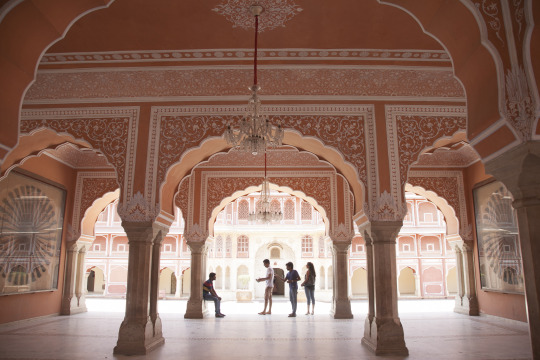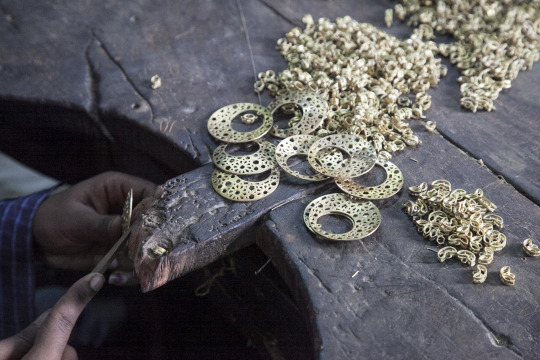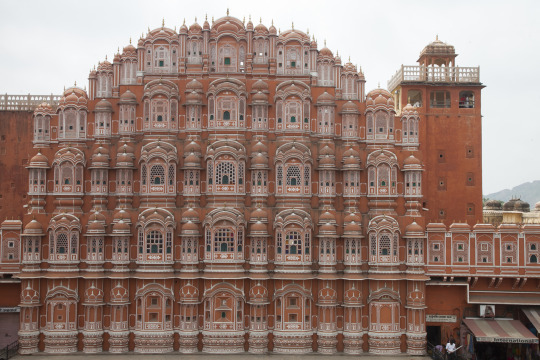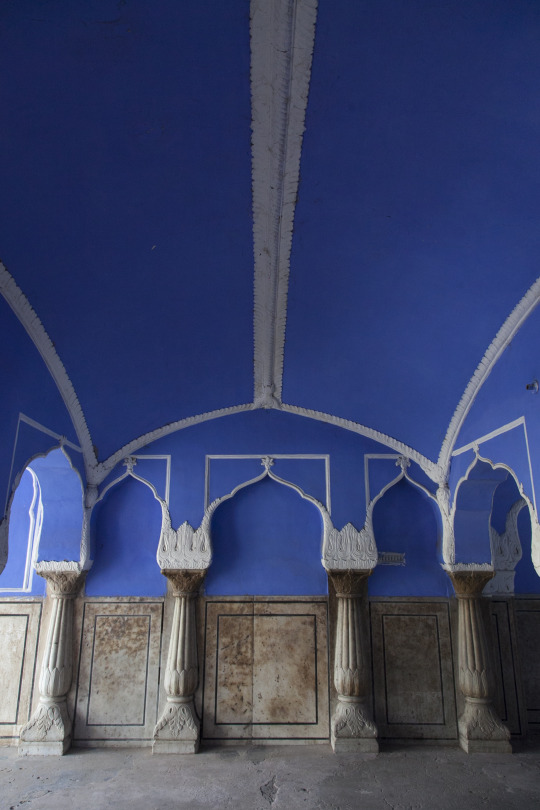
The Romance of Rajasthan: Jaipur

Traveling through the northwestern state of Rajasthan is a feast for the senses. Hot winds blow over the desert dunes; villagers in vibrant traditional dress celebrate with music and folk dances; traditional artisans gather in local markets to trade and share news. In this state characterized by its stark landscapes and harsh climate, the irrepressible spirit of a creative, resourceful people is richly expressed in art and music as they joyfully embrace life.
Having stopped along the way in Jodhpur, Jaisalmer and Udaipur, we arrive, finally, in Jaipur, the state capital and truly its brightest jewel.

Jaipur was built in the early 18th century by Maharaja Sawai Jai Singh II, a powerful Rajput ruler, whose ancient capital of Amber, had become too congested and difficult to secure against invaders. Jaipur was chosen because of its location near two rivers which provided a plentiful water supply in this arid region. One of many palaces in Jaipur, the Jal Mahal is located in the middle of the Man Sagar lake and is only accessible by boat.
Today Jaipur is a center for the production of many traditional handicrafts. Block printing and screen printing of cotton fabrics for clothing and home furnishings provide employment for many master craftsmen.

On a natural hill within the city limits, the forbidding Nahargarh fort was constructed for defensive purposes. The city itself was surrounded by high walls with 7 strong gates. Broad streets were laid out in a grid pattern with separate areas allocated for administrative buildings, the palace complex and residential and commercial purposes.
Jaipur’s skilled metal workers continue an ancient tradition of crafting hanging lamps and lighting fixtures in a style reminiscent of the grandeur of the Mughal period.
The sprawling palace complex includes formal gardens and a lake as well as several public reception areas and secluded living quarters for the royal family.

Jaipur’s renowned gold and silversmiths work with precious gems of all kinds. The traditional ‘meenakari’ style shown here features brilliant precious or semi-precious gems set with silver or gold leaf in elaborate floral designs.
A five-story palace, the Hawa Mahal, was built into the wall of the royal complex and features myriad windows to allow the ladies of the royal family to view life on the street outside without being seen themselves. The Rajput royal families followed strict rules of seclusion for women.

Hand embroidery using beads and mirror work is used to decorate all manner of clothing and fashion accessories.
The Jantar Mantar, now a Unesco World Heritage site, was built in the early 18th century, and consists of several masonry structures designed for astronomical observations and calculations. It is the best preserved of India’s ancient observatories and reflects the most advanced understanding of astronomy at the time.
Hand painted in floral designs using bright blues, greens and yellow, Jaipur Blue pottery is popular throughout India.

Now home to 3 million people, Jaipur is known as the ‘Pink City’ because of the salmon pink color of many of the palaces and administrative buildings. This custom dates back to 1876 when the city was first painted pink to welcome Prince Albert on a tour of the then British Empire.
This Valentine’s Day, shop Mela Artisans collection of handcrafted jewelry by our incredible artisans in Jaipur. It’s the perfect gift for that special someone (or, you know, to romance yourself). Shop the collection here.
